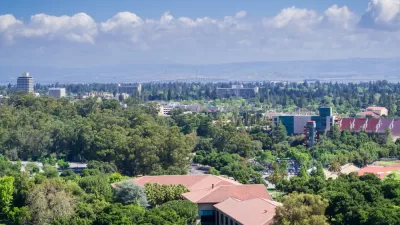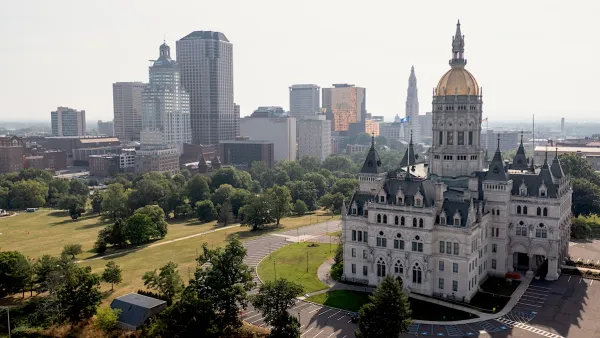A bill to create an exception for Marin County for meeting it's state affordable housing requirements is sailing through the legislature and even has the support of affordable housing developers.
"With a 62-4 bipartisan vote, the Assembly approved (on May 26) AB 1537, a bill that would make parts of Marin the only jurisdiction in the state exempt [sic] from a state law designed to promote development of affordable housing," writes Richard Halstead of the Marin Independent Journal.
Marin County has become a hotbed of opposition to increasing housing density, arguably more than any other county in the nine-county Bay Area. The idea behind AB 1537 is to enable the county, the state's wealthiest in 2011, to more easily meet it state affordable housing requirements, technically known as the "Regional Housing Need Allocation" by reducing certain housing density requirements.
One way for jurisdictions to demonstrate they are meeting the state requirement for creating low- and very-low-income housing is to use what is known as the state's "default" density number. [See page 3, PDF]. For metropolitan jurisdictions, the default density is 30 units per acre. For suburban jurisdictions, the default density is 20 units per acre.
Marin, located in the "San Francisco-Oakland-Fremont, California Metropolitan Statistical Area (MSA)", would normally have a default density of 30 u/a. Levine's bill only applies to Marin County, though initially it applied to "three other California counties" per the Marin County press release of January. County supervisors and nonprofit developers explained their support for the bill in that release:
Marin was designated as metropolitan when the default densities were first developed in 2004. While supportive of affordable housing opportunities, Marin Supervisors have negotiated with regional and state officials along with nonprofit housing developers to see if the default housing density in Marin could be amended to be more consistent with Marin’s suburban character and density and the suburban designation of the other North Bay counties.
The bill's author expressed his delight in the the progress his bill: "Legislation to redesignate Marin as a suburban county has never even gotten off the floor of the Assembly before," said Assemblyman Marc Levine, D-San Rafael, the bill's sponsor.
Expressing his opposition to the bill, Assembly member Tom Ammiano, D-San Francisco, said, "While I have a great deal of respect for Assemblymember Levine and appreciate what he is trying to do, this bill would, in essence, lower the affordable housing requirement in an area where the existing affordable housing requirements have not been met."
"It holds Marin out as an exception," Ammiano said, "but inadequate provision of affordable housing is something we are seeing throughout the state and we should be demanding more, not less, for our low-income populations who are hit especially hard by economic downturn, drought and housing shortages. We should not be lowering the bar."
Explaining why nonprofit housing developers support the bill, one said that "the 30 unit per acre zoning requirement has become a distraction that some opponents of affordable housing have used to their advantage."
Taking a different view was "Tyrone Buckley, a legal advocate with the California Rural Legal Assistance Foundation, one of the few groups opposing the bill, said, "It got off the floor with a pretty favorable vote so we're concerned it will carry that kind of momentum into the Senate, but we're going to continue to try to stop it, because we don't think it is good public policy."
Should the bill become law, it remains to be seen if a lower density requirement would facilitate housing construction at the reduced density level, and whether it would affect the county's low income housing requirements.
FULL STORY: Bill to ease pressure on Marin to build more housing moves forward

Maui's Vacation Rental Debate Turns Ugly
Verbal attacks, misinformation campaigns and fistfights plague a high-stakes debate to convert thousands of vacation rentals into long-term housing.

Planetizen Federal Action Tracker
A weekly monitor of how Trump’s orders and actions are impacting planners and planning in America.

San Francisco Suspends Traffic Calming Amidst Record Deaths
Citing “a challenging fiscal landscape,” the city will cease the program on the heels of 42 traffic deaths, including 24 pedestrians.

Defunct Pittsburgh Power Plant to Become Residential Tower
A decommissioned steam heat plant will be redeveloped into almost 100 affordable housing units.

Trump Prompts Restructuring of Transportation Research Board in “Unprecedented Overreach”
The TRB has eliminated more than half of its committees including those focused on climate, equity, and cities.

Amtrak Rolls Out New Orleans to Alabama “Mardi Gras” Train
The new service will operate morning and evening departures between Mobile and New Orleans.
Urban Design for Planners 1: Software Tools
This six-course series explores essential urban design concepts using open source software and equips planners with the tools they need to participate fully in the urban design process.
Planning for Universal Design
Learn the tools for implementing Universal Design in planning regulations.
Heyer Gruel & Associates PA
JM Goldson LLC
Custer County Colorado
City of Camden Redevelopment Agency
City of Astoria
Transportation Research & Education Center (TREC) at Portland State University
Jefferson Parish Government
Camden Redevelopment Agency
City of Claremont




























